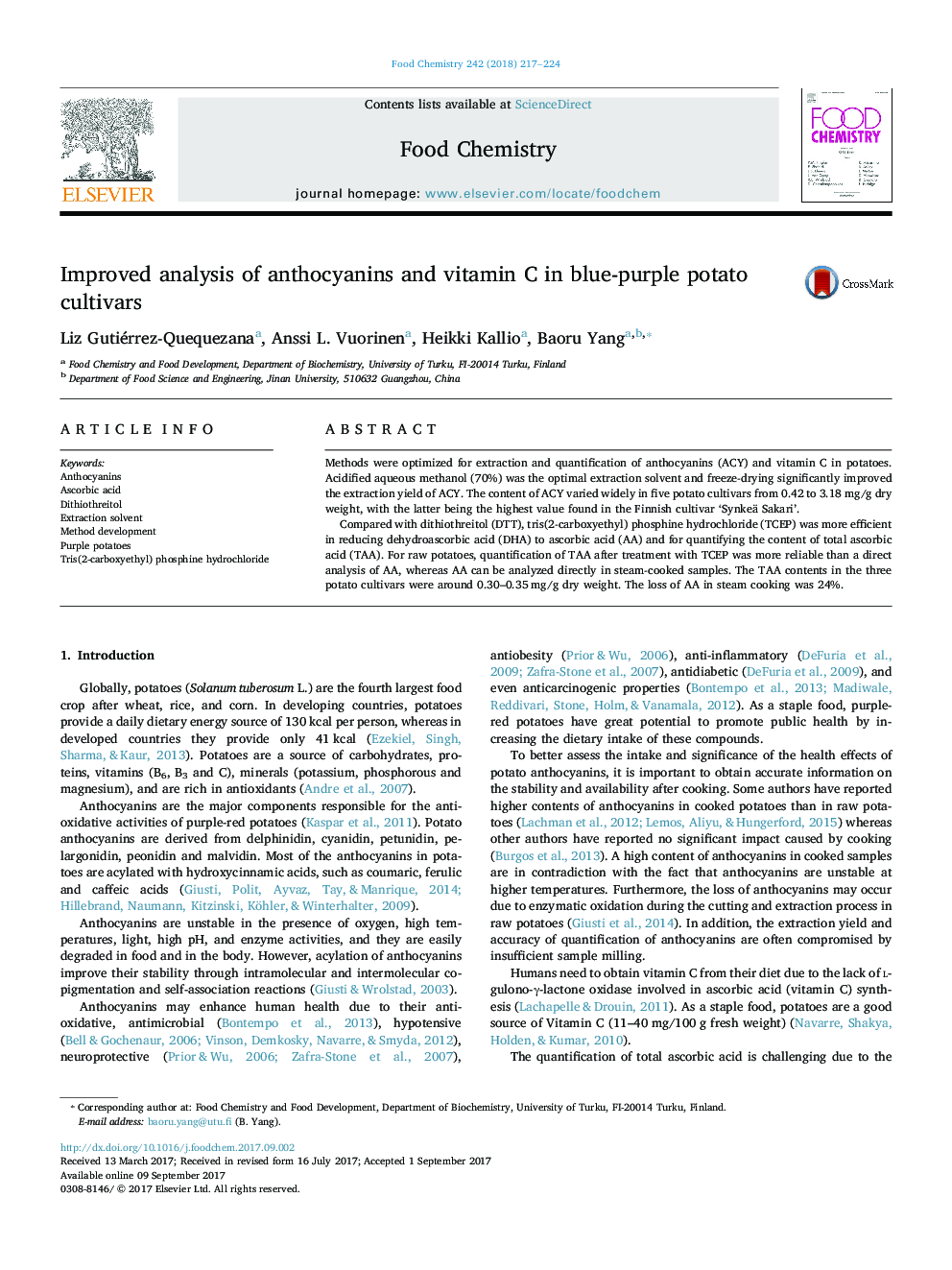| Article ID | Journal | Published Year | Pages | File Type |
|---|---|---|---|---|
| 5132601 | Food Chemistry | 2018 | 8 Pages |
â¢Freeze-drying enhances extraction of anthocyanins and vitamin C from potato tubers.â¢Steam-cooking stabilizes ascorbic acid in potato tubers by enzyme deactivation.â¢In raw potatoes total vitamin C can be reliably quantified but not ascorbic acid.â¢Tris(2-carboxyethyl) phosphine hydrochloride reduces dehydroascorbic acid efficiently.
Methods were optimized for extraction and quantification of anthocyanins (ACY) and vitamin C in potatoes. Acidified aqueous methanol (70%) was the optimal extraction solvent and freeze-drying significantly improved the extraction yield of ACY. The content of ACY varied widely in five potato cultivars from 0.42 to 3.18Â mg/g dry weight, with the latter being the highest value found in the Finnish cultivar 'Synkeä Sakari'.Compared with dithiothreitol (DTT), tris(2-carboxyethyl) phosphine hydrochloride (TCEP) was more efficient in reducing dehydroascorbic acid (DHA) to ascorbic acid (AA) and for quantifying the content of total ascorbic acid (TAA). For raw potatoes, quantification of TAA after treatment with TCEP was more reliable than a direct analysis of AA, whereas AA can be analyzed directly in steam-cooked samples. The TAA contents in the three potato cultivars were around 0.30-0.35Â mg/g dry weight. The loss of AA in steam cooking was 24%.
